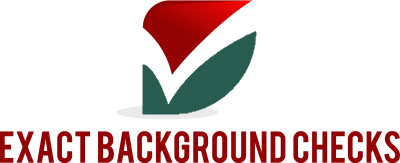Navigating the Pre-Employment Drug Testing Process

Understanding Pre-Employment Drug Tests
Pre-employment drug testing are a standard part of the hiring process for many employers, designed to ensure workplace safety, compliance, and productivity. These tests evaluate whether a job candidate has used substances that could impair their ability to perform their duties effectively or violate company policies.
What Are Pre-Employment Drug Tests and Why Are They Conducted?
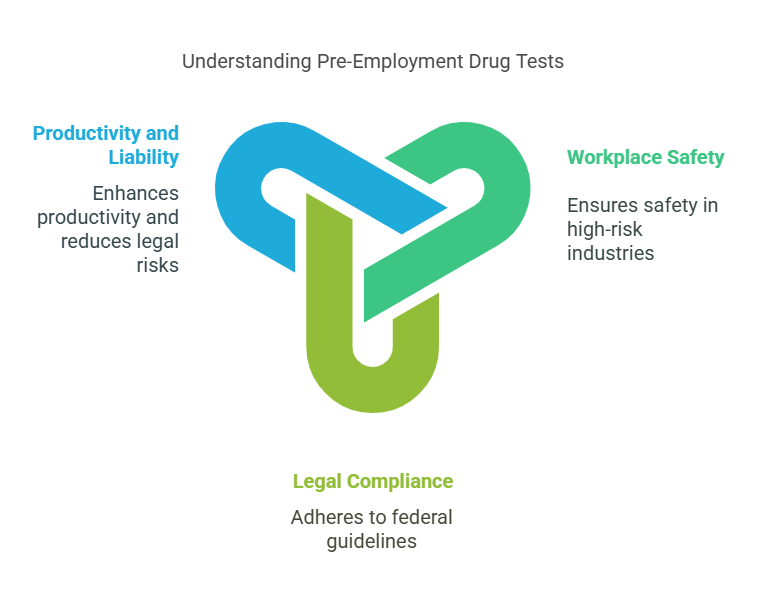
Pre-employment drug tests are screenings conducted to detect the presence of drugs, alcohol, or other substances in a candidate’s system. Employers use these tests as a preventive measure to ensure that new hires meet the organization’s standards for safety and performance.
Key Reasons Employers Conduct Pre-Employment Drug Tests:
- Workplace Safety: In industries such as transportation, healthcare, and construction, impairment from drugs or alcohol could lead to accidents, injuries, or fatalities.
- Legal Compliance: Employers in federally regulated industries must adhere to drug testing guidelines established by agencies like the Department of Transportation (DOT).
- Productivity and Liability: Drug-free workplaces often experience higher productivity levels and lower risks of legal claims or workplace misconduct.
Substances Commonly Screened in Pre-Employment Drug Tests
Employers typically screen for a standard panel of drugs, but the specific substances tested may vary depending on the industry and the employer’s policies.
Commonly Tested Substances in Pre-Employment Drug Tests:
| Substance | Description | Example Effects |
|---|---|---|
| THC (Marijuana) | Psychoactive compound found in cannabis; may be legal recreationally or medically in some states. | Impaired coordination, memory, and judgment. |
| Cocaine | Stimulant derived from coca leaves, associated with high energy and euphoria. | Increased heart rate, erratic behavior. |
| Amphetamines | Includes drugs like Adderall and methamphetamine. | Heightened alertness, focus, or agitation. |
| Opiates/Opioids | Includes substances like heroin, morphine, and prescription painkillers (e.g., oxycodone). | Drowsiness, slowed breathing, potential overdose. |
| Phencyclidine (PCP) | A dissociative hallucinogen often associated with violent or erratic behavior. | Detachment from reality, hallucinations. |
| Alcohol | May not be included in all panels but is sometimes tested to ensure sobriety. | Impaired motor skills, judgment, and reaction time. |
Employers may also include additional drugs, such as benzodiazepines, barbiturates, synthetic cannabinoids (e.g., K2/Spice), or synthetic opioids (e.g., fentanyl), in expanded panels.
Types of Pre-Employment Drug Tests
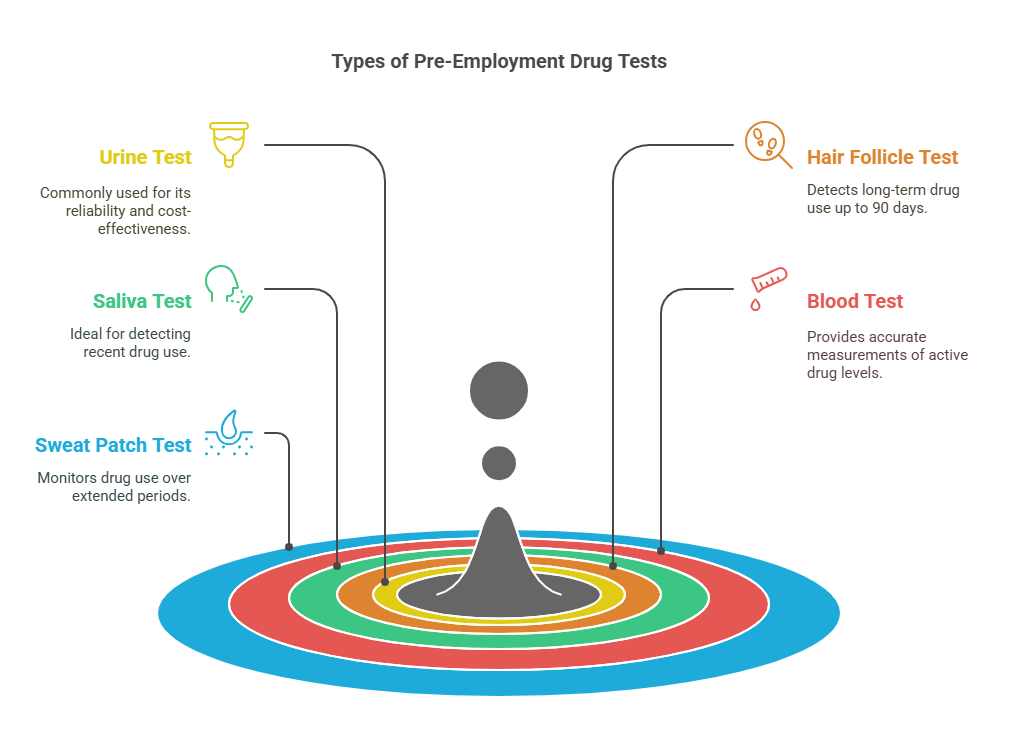
Different types of drug tests are used based on the employer’s requirements and the detection windows for specific substances.
1. Urine Drug Test
- Most Common: Urine tests are the standard for pre-employment screenings due to their reliability and cost-effectiveness.
- Detection Window: 1-7 days for most substances, but longer for chronic users (e.g., THC).
- Advantages: Easy to administer and widely accepted.
2. Hair Follicle Test
- Long-Term Detection: Hair tests can detect drug use up to 90 days before the test.
- Detection Window: Longer than any other test; limited to substances metabolized and deposited in hair follicles.
- Advantages: Difficult to cheat and provides a comprehensive drug use history.
3. Saliva Drug Test
- Recent Use: Saliva tests are ideal for detecting recent drug use (hours to 2 days).
- Detection Window: Short; effective for substances consumed within 48 hours.
- Advantages: Non-invasive and easy to administer on-site.
4. Blood Drug Test
- Highly Accurate: Blood tests provide precise measurements of active drug levels.
- Detection Window: Short, usually within a few hours to a day.
- Advantages: Most effective for detecting current impairment.
5. Sweat Patch Test
- Continuous Monitoring: Sweat patches are worn for extended periods (e.g., 1-2 weeks) to monitor drug use over time.
- Detection Window: Reflects use during the patch-wearing period.
- Advantages: Ideal for long-term monitoring but not commonly used for pre-employment.
| Test Type | Detection Window | Use Case |
|---|---|---|
| Urine Test | 1-7 days | Most common for general pre-employment screenings. |
| Hair Test | Up to 90 days | Suitable for industries requiring a long-term view. |
| Saliva Test | Hours to 2 days | Effective for detecting recent drug use. |
| Blood Test | Hours to 1 day | Ideal for detecting current impairment. |
| Sweat Test | 1-2 weeks (while worn) | Used for long-term monitoring rather than pre-employment. |
Factors Influencing Detection in Pre-Employment Drug Tests
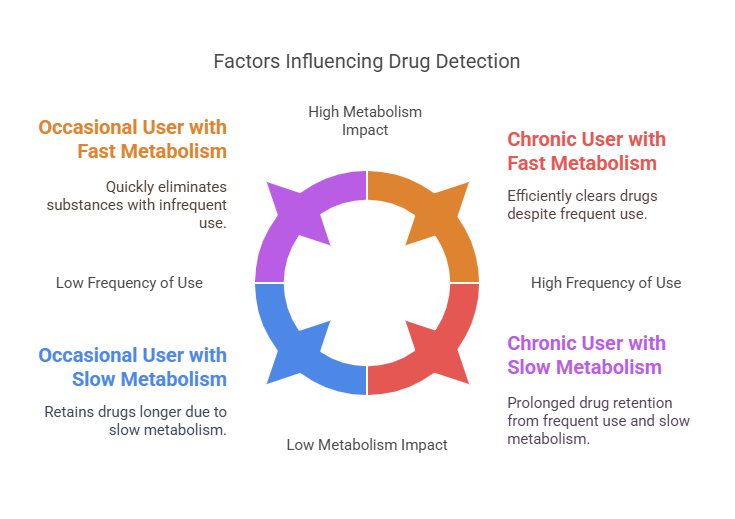
Several factors can impact whether a substance is detected during a drug test:
- Frequency of Use: Chronic users may retain drug metabolites in their system longer than occasional users.
- Metabolism: Individual metabolic rates affect how quickly substances are processed and eliminated.
- Substance Half-Life: Some drugs have longer half-lives, meaning they stay in the body for extended periods.
- Test Sensitivity: Detection thresholds vary depending on the type of test and the lab’s settings.
- Sample Type: Different biological samples (e.g., urine vs. hair) have varying detection capabilities.
Importance of Pre-Employment Drug Tests for Employers and Candidates
For Employers:
Pre-employment drug tests protect organizations from liability, improve workplace safety, and ensure compliance with regulatory requirements. Testing also demonstrates a commitment to maintaining a drug-free workplace.
For Candidates:
Understanding the substances tested and the type of drug test used can help job seekers prepare adequately. Knowing how long substances stay in the body and the potential for false positives can reduce anxiety and improve transparency during the hiring process.
How Pre-Employment Drug Testing Works and Available Services
Pre-employment drug testing is a structured process designed to provide employers with accurate and reliable information about a candidate’s drug use history. It involves multiple steps, from sample collection to lab analysis and reporting. Understanding how this process works, as well as the role of professional drug testing services, is essential for both employers and candidates.
Step-by-Step Process of Pre-Employment Drug Testing
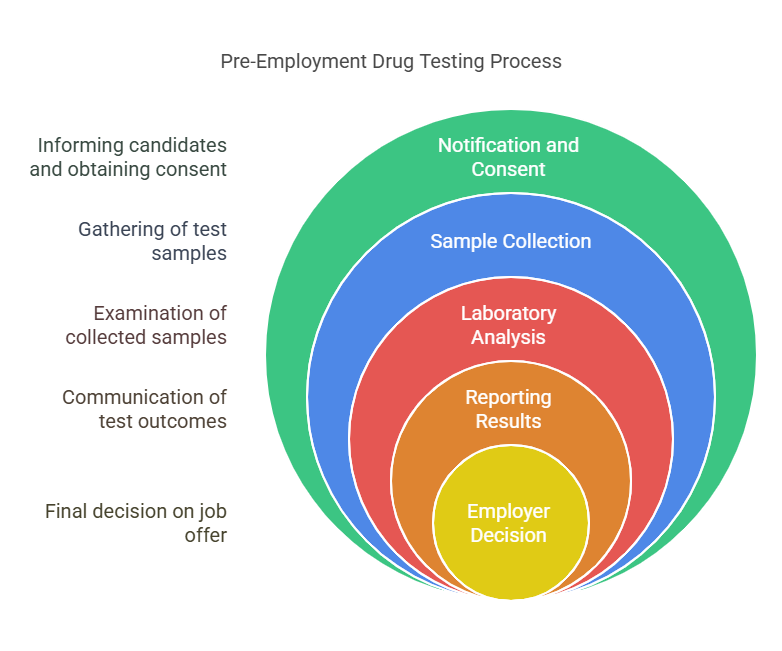
The process of pre-employment drug testing can vary depending on the type of test and the employer’s policies. However, most testing procedures follow a standard sequence:
1. Notification and Consent
Before conducting a drug test, employers must notify candidates and obtain their written consent. This step ensures compliance with laws like the Fair Credit Reporting Act (FCRA).
- Candidate Rights: Candidates should be informed about the type of test, the substances being screened, and the consequences of refusing or failing the test.
2. Scheduling the Test
After consent is obtained, the candidate is directed to a testing facility. Some employers may partner with third-party providers, such as Exact Background Checks, to streamline the process.
- Timeframe: Candidates are usually required to complete the test within a specified period, often 24-48 hours after notification.
3. Sample Collection
The most common sample types for pre-employment drug tests include urine, hair, saliva, and blood.
- Urine Tests: Candidates provide a urine sample in a secure restroom. To prevent tampering, some facilities implement temperature checks or use tamper-evident seals.
- Hair Tests: A small sample of hair, typically from the scalp, is collected to test for long-term drug use.
- Saliva Tests: A swab is used to collect a saliva sample from the candidate’s mouth.
- Blood Tests: Blood samples are drawn by a medical professional and analyzed for active substances.
4. Laboratory Analysis
The collected sample is sent to a certified laboratory for analysis.
- Initial Screening: The lab conducts an immunoassay test to identify the presence of drug metabolites.
- Confirmatory Testing: If the initial test is positive, a confirmatory test, such as Gas Chromatography-Mass Spectrometry (GC-MS), is performed to ensure accuracy.
5. Reporting Results
The lab provides the results to the employer or a Medical Review Officer (MRO).
- Negative Results: If no drugs are detected, the employer is notified, and the candidate can proceed with the hiring process.
- Positive Results: If drugs are detected, the MRO contacts the candidate to discuss any factors, such as prescription medications, that could explain the results.
6. Employer Decision
Based on the test results, the employer decides whether to proceed with the job offer. In some cases, candidates may have the option to request a retest or provide additional documentation to dispute the findings.
Detection Variations Based on Test Type and Employer Requirements
The substances detected during pre-employment drug testing can vary widely depending on the test type and the employer’s specific requirements.
Detection Windows for Different Test Types
| Test Type | Substances Detected | Detection Window | Use Case |
|---|---|---|---|
| Urine Test | THC, cocaine, amphetamines, opiates, PCP | 1-7 days (longer for chronic use) | General pre-employment screenings |
| Hair Test | THC, cocaine, opiates, amphetamines | Up to 90 days | Roles requiring long-term drug use history |
| Saliva Test | THC, cocaine, amphetamines, alcohol | Hours to 2 days | Recent drug use detection |
| Blood Test | Active substances (e.g., alcohol, THC) | Hours to 1 day | Detecting current impairment |
Employers may choose specific test types based on the role’s safety requirements, legal regulations, or workplace policies. For example, jobs involving heavy machinery or public safety often require more stringent testing protocols.
Expanded Testing Panels
In addition to standard tests (e.g., the SAMHSA 5 panel), some employers may opt for expanded panels to screen for:
- Benzodiazepines (e.g., Xanax, Valium)
- Barbiturates (e.g., phenobarbital)
- Synthetic cannabinoids (e.g., K2, Spice)
- Synthetic opioids (e.g., fentanyl)
Importance of Reliable Drug Testing Services
Employers rely on professional drug testing providers to ensure accuracy, compliance, and efficiency. Partnering with a trusted service can streamline the testing process and mitigate risks associated with inaccurate or non-compliant tests.
Exact Background Checks: A Trusted Provider
Exact Background Checks offers comprehensive pre-employment drug screening services, tailored to meet the needs of diverse industries.
Key Features of Exact Background Checks:
- Certified Laboratories: Samples are analyzed in labs certified by organizations such as the Substance Abuse and Mental Health Services Administration (SAMHSA).
- Customizable Panels: Employers can select testing panels that align with their specific needs.
- FCRA Compliance: The company ensures that all drug testing procedures comply with federal and state laws.
- Fast Turnaround Times: Results are delivered promptly to help employers make timely hiring decisions.
- Candidate Support: Exact Background Checks provides resources for candidates, including information on MRO reviews and retesting options.
Tips for Candidates to Prepare for Pre-Employment Drug Tests
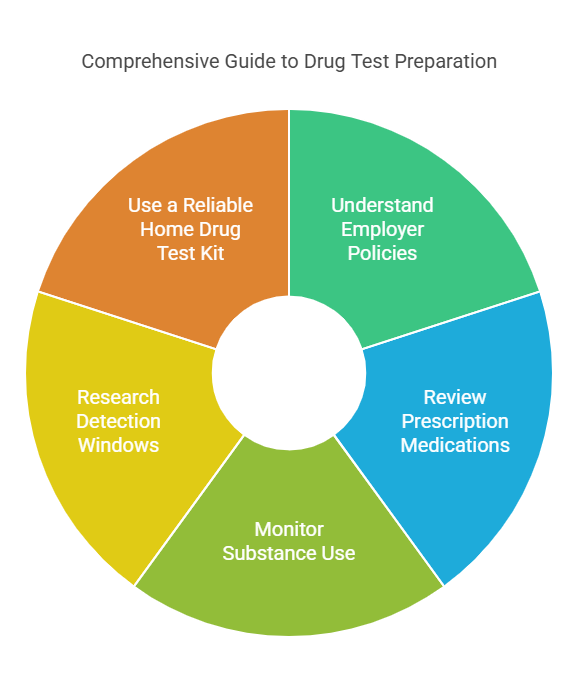
Pre-employment drug testing can be a source of anxiety for candidates, but preparation and awareness can help alleviate concerns.
1. Understand Employer Policies
- Request Information: Ask your potential employer about their drug testing policies, including the substances tested and the type of test used.
- Know the Consequences: Understand the implications of refusing or failing the test.
2. Review Prescription Medications
- Consult with a Doctor: Ensure that any prescription medications you are taking are documented and communicated to the MRO if needed.
- Avoid Misunderstandings: Some medications, such as opioids or amphetamines, can trigger positive results.
3. Monitor Substance Use
- Stay Drug-Free: Avoid any substances that could result in a positive test, especially in the weeks leading up to the test.
- Be Cautious with Over-the-Counter Products: Some supplements or over-the-counter medications may contain ingredients that could cause false positives.
4. Research Detection Windows
Understanding how long substances remain in your system can help you gauge whether you are at risk of failing a test.
5. Use a Reliable Home Drug Test Kit
Consider using an FDA-approved home drug test kit to assess your status before the official test.
Preparing for Common Test Scenarios
Scenario 1: Short Notice Testing
- Avoid substances immediately, even if the test type has a short detection window (e.g., saliva test).
- Drink water to stay hydrated, but do not attempt to dilute your sample excessively, as this may raise suspicion.
Scenario 2: Prescription Disputes
- Gather documentation from your healthcare provider to explain any legitimate medical reasons for substances detected in the test.
- Communicate proactively with the employer or MRO to avoid delays in the hiring process.
Scenario 3: Requesting a Retest
- If you believe the results are inaccurate, request a retest and ensure it is conducted on the original sample to maintain integrity.
